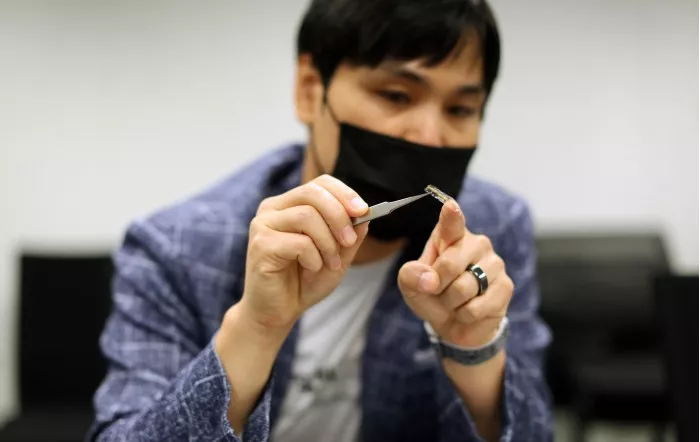A research team at Georgia Tech has just introduced a low-cost data collection alternative that requires no angiography and is more labor-saving As shown in the figure, this "smart artery stent" can open narrow blood vessels and wirelessly transmit blood flow data. In addition, by transmitting data to external computers or mobile devices, this experimental device is expected to greatly improve the diagnosis and treatment experience of vascular patients and save more lives.

(from: Georgia Tech)
The research team, led by Woon Hong Yeo, an assistant professor of the University, introduced in detail their newly developed intelligent blood flow monitoring implant that can transmit data wirelessly.
It is made of a variety of biocompatible materials, combined with a flexible capacitive sensor with aerosol jet printing and a conductive circuit as an antenna, but does not depend on the rechargeable battery that needs to be replaced.
Like ordinary vascular stents, the device can be made by surgically implanting damaged blood vessels and providing structures therein, so as to keep the blood vessels dilated and maintain proper blood circulation.

Woon Hong Yeo team has developed a new type of wireless electronic vascular monitoring intelligent stent
It is reported that this electronic system aims to wirelessly transmit hemodynamic data including arterial pressure, pulse and flow to the external data acquisition system.
It can be seen that in the so-called "inductive coupling" process, the externally applied magnetic field can be used to wirelessly transmit energy to the support (temporary power supply). At this time, the sensor can obtain blood flow data and transmit the electrical signal from the body wirelessly.
In addition, thanks to the ultra-thin and compact shape, researchers can use the catheter for any body part. Then the external receiving device can pick up and analyze the signal to obtain real-time information about the intravascular condition.

Finally, laboratory tests show that the device can even be placed in the rabbit iliac artery and transmit accurate data - the distance across the blood can reach 3.5 cm (1.4 inches), while the distance across the air can reach 5.5 cm (2.2 inches), and there is room for further improvement in the follow-up.
Details of this study have been published in [science advances] published on May 11, 2022( https://www.science.org/doi/10.1126/sciadv.abm1175 ) 》In the journal.
The original title was "full implantable wireless battery vacuum electronics with printed soft sensors for multiplex sensing of hemodynamics".